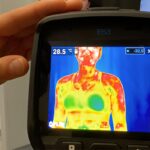 dementia
dementia
Researchers from The University of Texas Health Science Center at San Antonio (UT Health San Antonio) have identified a potential biomarker for dementia that manifests as a thinning ribbon of brain tissue known as cortical gray matter. This groundbreaking discovery suggests that changes in cortical gray matter thickness may serve as an accurate predictor of dementia five to 10 years before the onset of symptoms. The study, published in Alzheimer’s & Dementia: The Journal of the Alzheimer’s Association, utilized MRI brain imaging and involved collaboration with colleagues from The University of California, Davis, and Boston University.
The research focused on two cohorts: 1,000 participants from the Framingham Heart Study in Massachusetts and 500 individuals from a California cohort, with a significant representation of 44% Black and Hispanic participants. The average age of both cohorts during MRI studies was 70 to 74 years. The study aimed to discern a pattern in brain MRIs conducted 10 years earlier to reliably distinguish those who later developed dementia from those who did not.
Dr. Claudia Satizabal, lead author and part of UT Health San Antonio’s Glenn Biggs Institute for Alzheimer’s and Neurodegenerative Diseases, emphasized the significance of cortical gray matter thickness as a potential marker to identify individuals at high risk of dementia. Early detection allows for a more favorable time window for therapeutic interventions, lifestyle modifications, and improved tracking of brain health to mitigate the progression to dementia.
Sudha Seshadri, MD, director of the Glenn Biggs Institute and senior investigator with the Framingham Heart Study, highlighted the robustness of the study’s results, validated across diverse populations. Thicker ribbons correlated with better outcomes, while thinner ribbons were associated with worse outcomes in general.
The study’s consistency across populations suggests potential applications in clinical trials. The cortical gray matter thickness biomarker could help researchers select participants who have not yet developed the disease but are on track for it, minimizing costs and optimizing the selection of individuals for investigational medications.
Looking ahead, the research team plans to explore risk factors related to cortical gray matter thinning, such as cardiovascular risk factors, diet, genetics, and exposure to environmental pollutants. The findings open new avenues for understanding and addressing dementia risk factors, offering hope for improved diagnosis and intervention strategies in the future.










